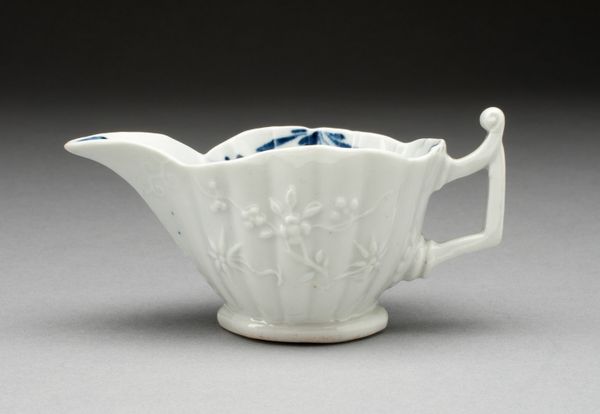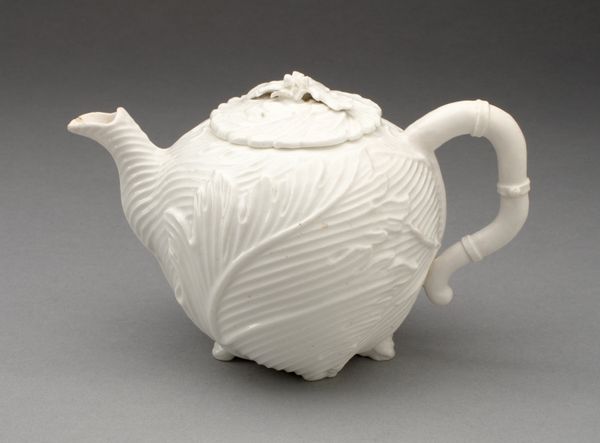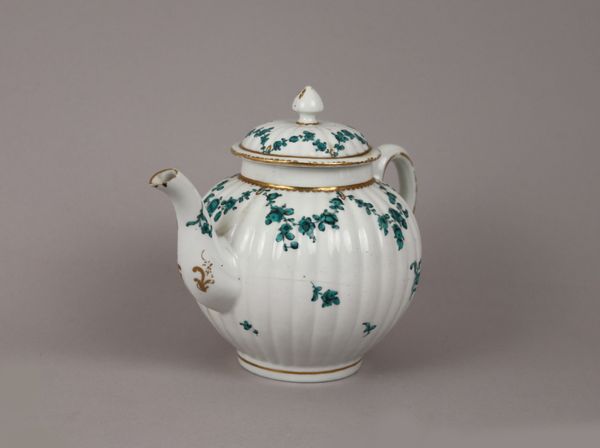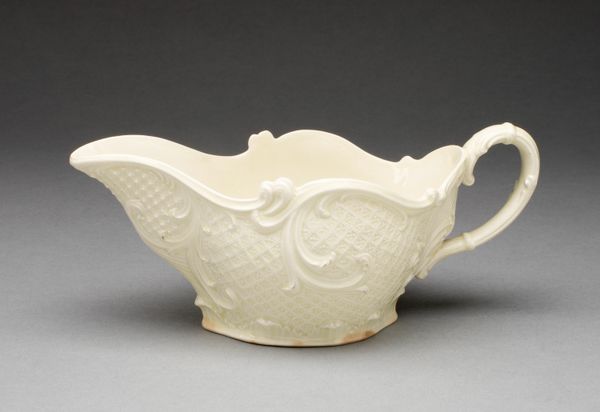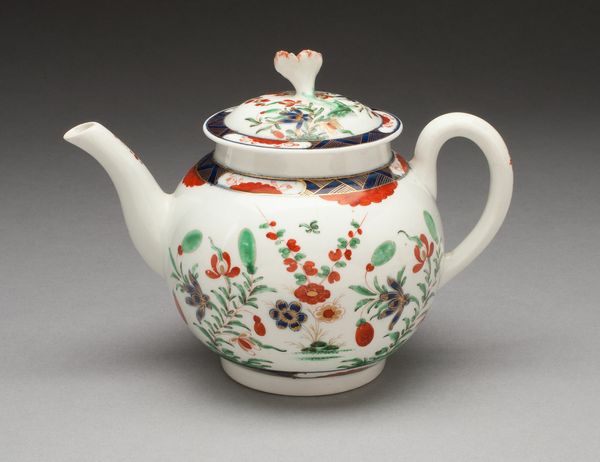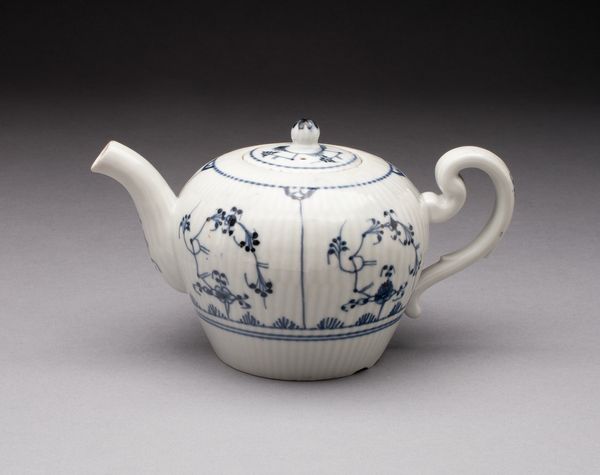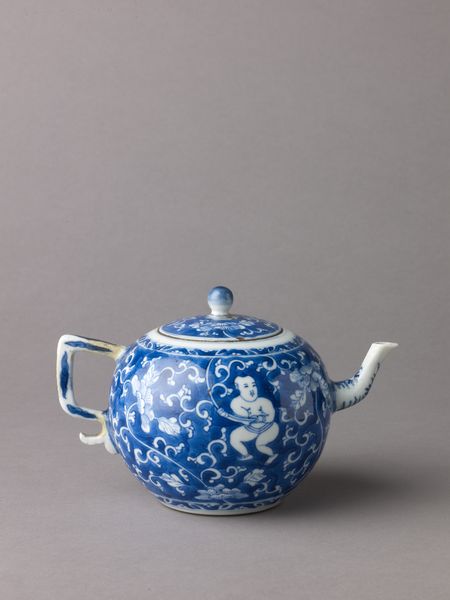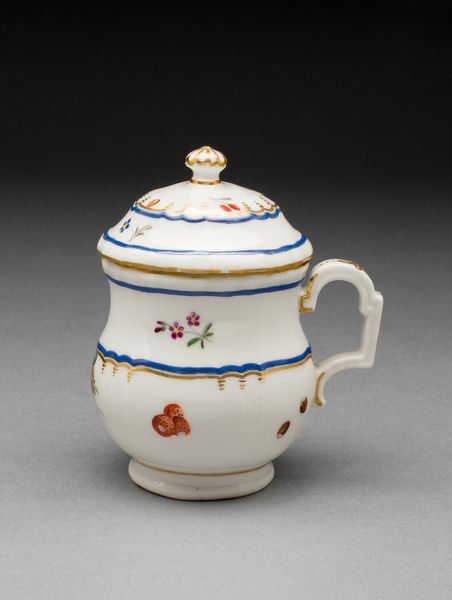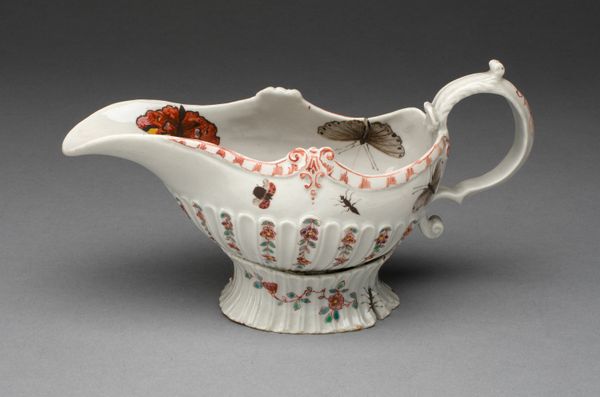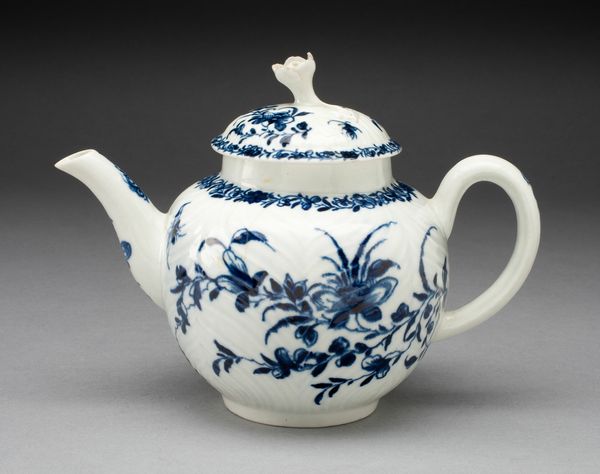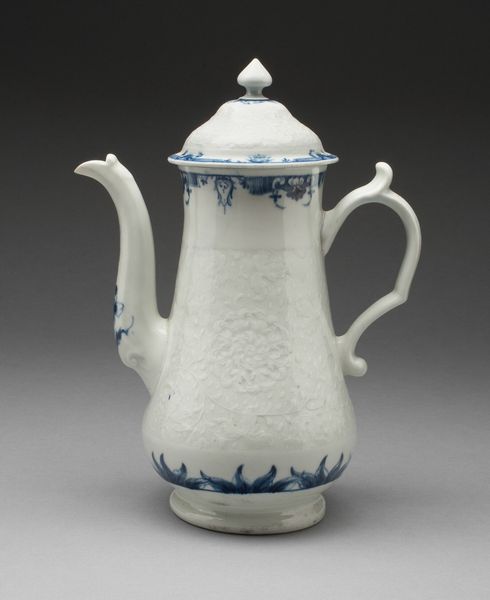
ceramic, earthenware
#
ceramic
#
earthenware
#
england
#
decorative-art
Dimensions: 10-13/16 x 12-1/4 x 8-7/8 in. (27.5 x 31.1 x 22.5 cm)
Copyright: Public Domain
Editor: We're looking at a "Hot-water kettle" from around 1770, crafted by Leeds Pottery out of earthenware. Its monochrome design strikes me as both modern and a bit austere. What do you see in this piece? Curator: The kettle is more than just a functional object; it's a vessel imbued with social rituals and symbolic weight. The simple elegance of the stripes against the earthenware speaks to a rising middle class seeking refinement in their daily lives. Does the contrast in coloration draw your eye anywhere in particular? Editor: Definitely. I'm drawn to the handle; the curves seem to contradict the straight lines of the body. Curator: Precisely. That handle, while decorative, acts as a visual reminder of natural forms adapted and restrained. Think of the pastoral fantasies popular at the time, nature domesticated for comfort. In England, consider tea’s burgeoning empire ties, wealth from afar made intimate at home. What kind of dialogue emerges when contrasting such forms? Editor: It creates tension, maybe? Like wanting something fancy but still keeping it simple. Curator: That tension is key. It's about aspiration and self-definition. The owners weren't simply consuming tea; they were performing a kind of social theater, defining their status through carefully chosen objects. What is gained or lost when functional becomes fashionable? Editor: That makes me consider its presence beyond a design. The cultural memory is like an imprint. Curator: Indeed. It reflects evolving ideas of identity, class, and the everyday rituals that shape them. I'm glad this piece stirred thoughts beyond its visual appeal. Editor: Me too! Seeing the hot water kettle in the broader historical and symbolic framework is very insightful. It is not "just" an ordinary, antiquated kitchen item.
Comments
minneapolisinstituteofart almost 2 years ago
⋮
This kettle was most likely for pouring hot water into teapots. The double twist branch-shaped handles that terminate in stylized leaves, and the molded female mask under the spout, are characteristic of ceramics made by the Leeds Pottery. Leeds was known for its production of creamware, which is a particular type of earthenware also called "Queen's ware" because the creamy color was greatly admired by Queen Charlotte. The blending of naturalism and asymmetry were hallmarks of the rococo style, which was popular in England and America into the late 18th century, as seen in many object on view in this case. An interest in the geometric ideals of neoclassicism, which followed the rococo, is conveyed here in the striped banding of manganese slip or colored liquid clay.
Join the conversation
Join millions of artists and users on Artera today and experience the ultimate creative platform.
